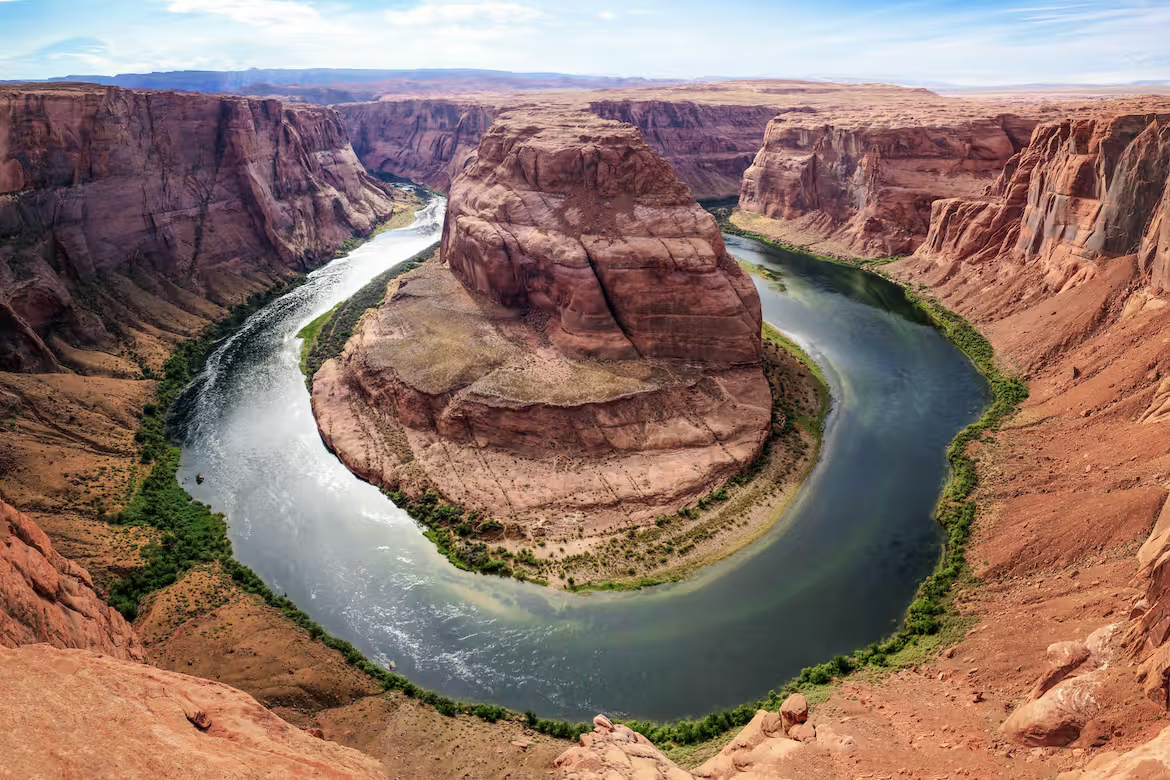The Grand Canyon in Arizona is a natural formation distinguished by layered bands of red rock, revealing millions of years of geological history in cross-section. Vast in scale, the canyon averages 10 miles across and a mile deep along its 277-mile length. Much of the area is a national park, with Colorado River white-water rapids and sweeping vistas.
The Grand Canyon is a mile-deep gorge in northern Arizona. Scientists estimate the canyon may have formed 5 to 6 million years ago when the Colorado River began to cut a channel through layers of rock. Humans have inhabited the area in and around the canyon since the last Ice Age. The first Europeans to reach the Grand Canyon were Spanish explorers in the 1540s. President Benjamin Harrison first protected the Grand Canyon in 1893 as a forest reserve, and it became an official United States National Park in 1919.
The Grand Canyon is located in northern Arizona, northwest of the city of Flagstaff. The canyon measures over 270 miles long, up to 18 miles wide and a mile deep, making it one of the biggest canyons in the world.
This natural landmark formed about five to six million years as erosion from the Colorado River cut a deep channel through layers of rock.
The Grand Canyon contains some of the oldest exposed rock on Earth. The mile-high walls reveal a cross section of Earth’s crust going back nearly two billion years. These rock layers have given geologists the opportunity to study evolution through time.
Grand Canyon Skywalk
Grand Canyon National Park received about 44,000 visitors when it first opened in 1919. Today, roughly five million people from all over the globe visit the Grand Canyon each year.
One recent addition is the Grand Canyon Skywalk, a cantilevered walkway with a glass floor that hangs over a western section of the canyon. The controversial attraction—opponents say it disturbs sacred grounds and is obtrusive in an otherwise pristine area—opened in 2007 and is owned by the Hualapai Tribe.
Tourist development in recent years has stressed the canyon’s water resources and threatened Native American sacred sites. The federal government has put limits on the number of river and helicopter trips through the Grand Canyon each year.
In 2017, the Navajo Nation rejected on environmental grounds the Grand Canyon Escalade, a major development project that would have included hotels, stores, and a gondola that would have transported visitors from Navajo land to the nearby South Rim of the Grand Canyon.


